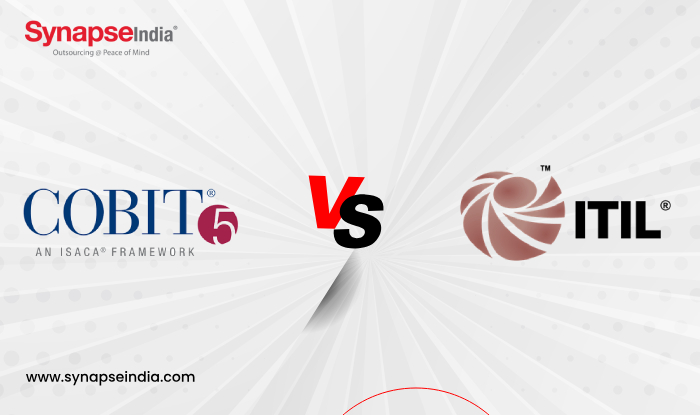 21 May 2024
21 May 2024
To have an effective IT governance is essential for organizations to ensure the alignment of IT processes with business objectives, manage risks, and deliver value to stakeholders. Two widely recognized frameworks for IT governance are COBIT (Control Objectives for Information and Related Technologies) and ITIL (Information Technology Infrastructure Library). In this blog, we'll explore the key differences between COBIT and ITIL, their respective features, and how they can be leveraged to enhance IT governance practices within organizations.

COBIT is a comprehensive framework developed by ISACA (Information Systems Audit and Control Association) that provides guidance and best practices for IT governance and management. COBIT focuses on defining and aligning IT processes with business goals, ensuring the effective management of IT resources, and enabling continuous improvement. It comprises a set of principles, processes, and controls organized into domains such as governance, management, and assurance.
ITIL, developed by AXELOS (formerly known as the Office of Government Commerce), is a framework that provides a set of best practices for IT service management (ITSM). ITIL offers guidance on designing, implementing, and managing IT services to meet the needs of the business and its customers. It consists of a series of practices organized into service lifecycle stages, including service strategy, service design, service transition, service operation, and continual service improvement.
After getting insights on each of the IT governance frameworks, here is a detailed comparison between COBIT and ITIL.
| Feature | COBIT | ITIL |
|---|---|---|
| Focus | IT Governance and Management | IT Service Management |
| Scope | Comprehensive framework covering governance, risk management, compliance, and performance management | Framework for IT service lifecycle management, including service strategy, design, transition, operation, and continual service improvement |
| Objectives | Alignment of IT with business objectives, optimization of IT investments, and improvement of service quality and reliability | Improvement of IT service delivery, enhancement of customer satisfaction, and delivery of value to the business and customers |
| Core Components | Domains, processes, and control objectives | Service lifecycle stages, processes, functions, and roles |
| Framework Structure | Principles-based approach with a focus on control objectives, processes, and management practices | Lifecycle-based approach with emphasis on service strategy, design, transition, operation, and continual improvement |
| Implementation Approach | Flexible and customizable framework that can be adapted to fit different organizational contexts | Structured approach with predefined practices and processes |
| Integration with Other Frameworks | Designed to complement and integrate with other frameworks and standards such as ITIL, ISO/IEC 27001, and ISO/IEC 20000 | Can be integrated with complementary frameworks and standards, such as COBIT, ISO/IEC 20000, and DevOps |
| Community Support | Strong community support with active forums, extensive documentation, and training resources | Active community with resources and certifications available online |

COBIT and ITIL offer valuable guidance and best practices for IT governance and management, albeit with different scopes and objectives. While COBIT provides a comprehensive framework for overall IT governance and control, ITIL focuses specifically on IT service management. Organizations can leverage COBIT and ITIL in conjunction with each other, tailoring their approaches to meet their specific needs and objectives. By adopting best practices from both frameworks, organizations can enhance their IT governance practices, optimize IT service delivery, and drive business value in an increasingly digital world.
.jpg)
 31 Jan 2025
31 Jan 2025
